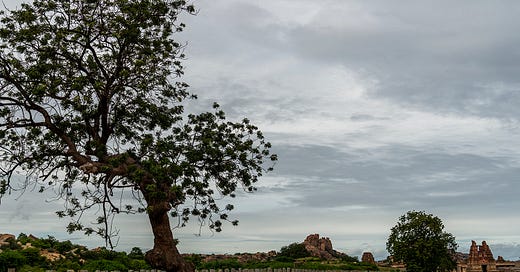The Importance of Leading Lines in Landscape Photography
Create Powerful, Professional Landscapes That Guide the Viewer’s Eye Naturally
Landscape photography is all about capturing the grandeur and essence of nature, drawing the viewer into the frame, and telling a visual story. One of the most powerful tools that landscape photographers use to achieve this is the technique of leading lines—a foundational compositional method that instantly elevates the aesthetic quality and impact of an image.
In this blog, we'll explore why leading lines are essential in landscape photography, how they enhance composition, and practical ways to incorporate them into your own work. Whether you’re a beginner or a seasoned enthusiast, mastering leading lines will help you produce more professional, immersive, and emotionally engaging landscapes.
📷 What Are Leading Lines?
Leading lines are visual elements within a photograph—like roads, rivers, fences, trails, or shorelines—that guide the viewer’s eyes through the image, usually toward a point of interest. These lines naturally direct attention and add depth, helping your composition tell a story and feel more dynamic.
🌄 Why Leading Lines Matter in Landscape Photography
✅ 1. Guide the Viewer’s Eye
Leading lines serve as visual pathways that take the viewer on a journey through the scene. Instead of aimlessly scanning the photo, the viewer is led to the subject or the horizon, which keeps them engaged and focused.
✅ 2. Create a Sense of Depth
In wide landscapes, leading lines create a three-dimensional feel by emphasizing foreground, middle ground, and background. This illusion of depth is especially impactful in still images where you want to convey scale and distance.
✅ 3. Add Balance and Structure
Leading lines introduce compositional order. They help structure otherwise chaotic natural elements into pleasing, organized visual flows that look more intentional and professional.
✅ 4. Enhance Storytelling
Whether it's a winding mountain trail or a stream leading toward the sunset, leading lines evoke curiosity and emotional connection—key elements of powerful visual storytelling.
🛤️ Common Leading Lines in Landscape Photography
Pathways & Trails: Footpaths or roads that disappear into the distance.
Rivers & Shorelines: Naturally flowing water creates graceful curves and direction.
Fences & Railings: Straight or zigzagging lines that guide viewers through the frame.
Tree Lines: Forest edges, rows of trees, or even shadows.
Mountain Ridges: Lines formed by the rise and fall of hills and peaks.
Plowed Fields or Sand Dunes: Repetitive patterns that draw the eye inward.
📐 How to Use Leading Lines Effectively
🔹 1. Position Lines in the Foreground
Start your leading line at the bottom edge of the frame to immediately capture the viewer’s eye and lead them upward or inward into the scene.
🔹 2. Use Diagonal or Curved Lines for Drama
Diagonal lines add dynamism and energy; curved lines create elegance and flow. Both styles add depth and emotion to your composition.
🔹 3. Place the Focal Point at the End of the Line
Ensure that your leading lines guide the viewer directly toward the main subject or point of interest—like a tree, a mountain peak, or the rising sun.
🔹 4. Shoot in Low Light for Better Shadows
Early morning or late evening light helps create long, directional shadows that can act as natural leading lines.
🎞️ How Shutter Priority Mode Complements Leading Lines
While leading lines are primarily a compositional technique, you can enhance their visual effect using Shutter Priority Mode (Tv or S):
Fast Shutter Speed (1/250s or faster):
Ensures sharpness in textures like fences, rocks, or roads that make up your leading line—ideal for crisp detail.Slow Shutter Speed (1/2s to 2s):
Smooths moving water or clouds, giving leading lines like rivers a soft, dreamy quality. Use a tripod for stability.
By setting the shutter speed manually, you allow the camera to calculate the appropriate aperture while you focus on creatively using lines and motion.
🖼️ Creative Tips for Landscape Leading Lines
Use Wide-Angle Lenses: They emphasize perspective and make foreground lines more dramatic.
Shoot from a Low Angle: This exaggerates the presence of your leading lines, drawing the viewer deeper into the scene.
Look for Patterns: Parallel lines or repeating elements make for strong visual rhythm.
Combine with the Rule of Thirds: Place your line off-center to balance movement and subject placement.
🚨 Mistakes to Avoid
Line Leading Out of Frame: This causes the viewer’s eye to leave the image prematurely.
Weak or Unclear Lines: Make sure your line is defined and directs to a clear subject.
Distracting Elements: Remove clutter near or along the line that may interrupt the visual journey.
✅ Checklist: Leading Lines in Landscape Photography
Identify strong lines in the environment.
Position your camera low and wide to exaggerate depth.
Place the subject or horizon at the endpoint of the line.
Choose shutter speed based on movement (freeze or blur).
Ensure the composition leads the viewer’s eye naturally.
🌟 Final Thoughts: Compose with Purpose, Lead with Intention
Mastering the use of leading lines in landscape photography turns a flat scene into a dynamic story. These lines aren’t just compositional tools—they’re visual guides that connect your viewer emotionally to the image, directing attention and creating rhythm, balance, and meaning.
Practice this technique with different types of terrain and lighting conditions, and you’ll start to notice a dramatic improvement in how your landscapes are perceived—both aesthetically and professionally.
🚀 Join My Photography Community!
If you're serious about taking your landscape photography to the next level and want to consistently produce visually stunning, detail-rich, and professional-quality images, I invite you to join my exclusive photography community!
As a member, you'll receive:
📚 In-depth Learning Modules: Master leading lines, shutter control, composition, and more.
🎥 Live Workshops & Photo Reviews: Practical support and real-time creative guidance.
🤝 A Community of Like-Minded Creators: Learn, share, and grow with fellow photography enthusiasts.
👉 Subscribe now and start creating images that lead, inspire, and captivate.
Together, let's create meaningful photography—one line at a time. 📸✨






